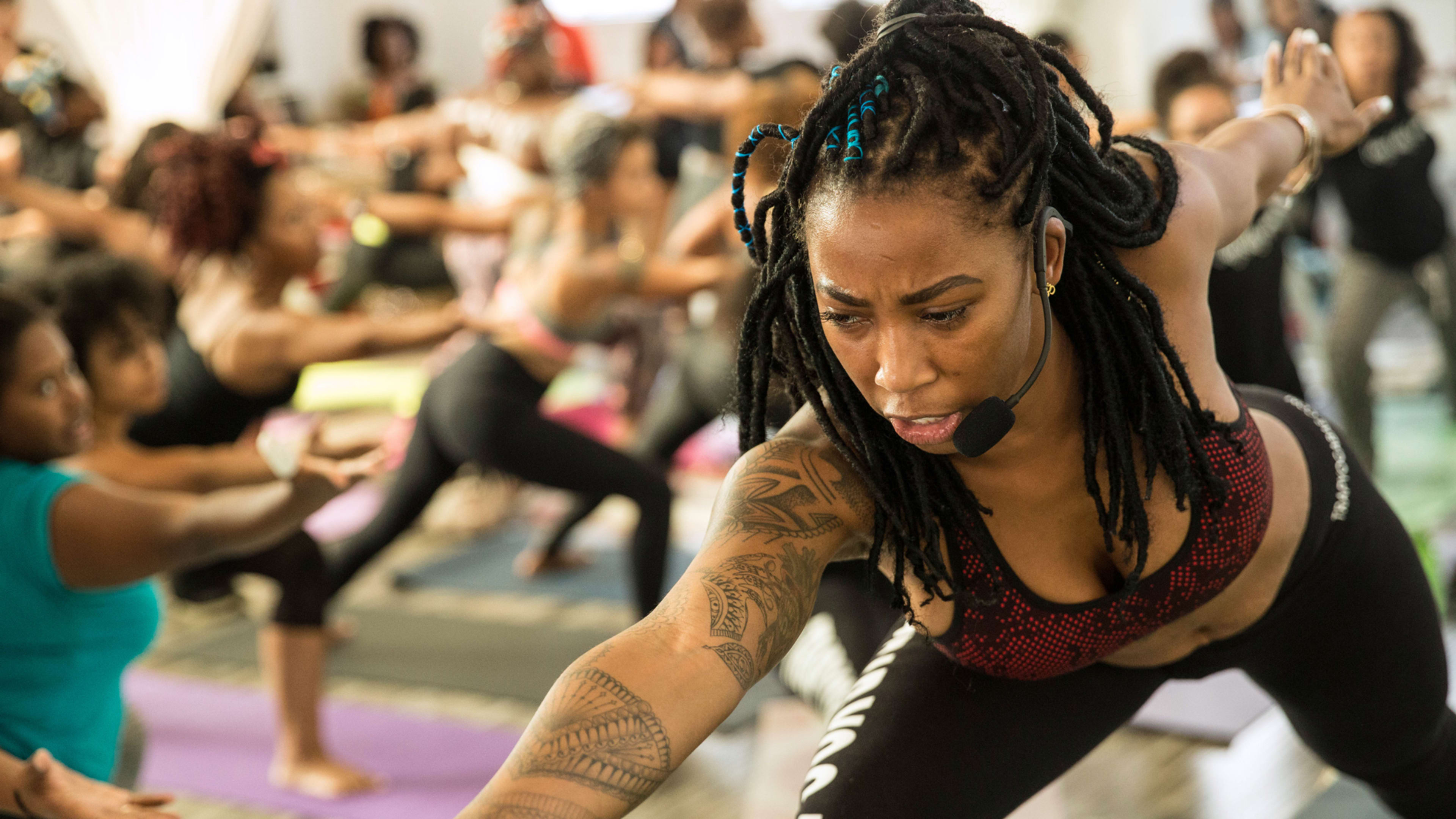On a busy, graffiti-ridden boulevard–not far from the streets that witnessed the Rodney King riots–stands the only yoga studio in South Los Angeles. Since 2013, the donation-based Green Tree Yoga Meditation center has served a community with a poverty level of over 40%, nearly twice that of the average L.A. community.
The modest, welcoming space acts as a haven for women suffering from a host of issues, be it unemployment, abuse, or the stress of eviction. For those who cannot access or afford therapy, it’s a crucial self-preservation tool.
“There’s a lot of trauma here,” says Jennifer Alvarez, Green Tree Yoga’s operations manager. “We offer a space for healing.”
During class, it’s not uncommon to hear gang violence outside–a daily occurrence for these residents. Through meditative breathing techniques, they learn how to silence the noise and focus on serenity within.
Of course, this doesn’t look like your traditional yoga studio; there are no cucumber-infused water coolers or fancy soy candles burning. Instead, peeling paint marks the walls and furniture is sparse. And yet it’s warm and inviting, with a lone string of twinkle lights framing the ceiling.
In lieu of juice bar flyers, the community table offers pamphlets on HIV prevention or legal help for those facing deportation. Posters broadcast political messages like, “Black women’s health matters,” and “Immigrants welcome here.”
“We try to be aware of the social issues that are affecting the well-being of our students,” explains Alvarez.
In the last few years, this ambitious studio made significant inroads in a community that assumed healthy pursuits were strictly reserved for affluent demographics. At a traditional L.A. studio, a class can run anywhere from $15-$25. Here, attendees can donate what they can afford, or simply attend for free. For once, wellness is accessible to them.
Stretching To New Circles
Green Tree Yoga, with grant aid, is one of several organizations spreading health and wellness disciplines to underserved and underrepresented sectors. A scan of fitness magazines and ads tend to promote the idea that this is something for people with money (and svelte bodies). “They were intimidated,” says Alvarez of her community.
Barriers to entry can include culture, race, language, or income. Sometimes, it’s all of them.
Since health and wellness was crowned the new luxury status symbol, the disparity has grown even wider. The issue most recently propelled Carolyn Kylstra, the editor-in-chief of SELF, to admit her publication “has a long and very white history to contend with.” The magazine says it’s now dedicated to better serve minorities.
But plenty of individuals and boot-strapped startups already created innovative ways to bring self-care to wholly new audiences. Until mainstream companies catch on, they’re leading the way for inclusivity.
Black Girl In Om is a lifestyle brand that promotes holistic wellness for women of color through online publications, social media initiatives, and a podcast with over half a million downloads.
“I would look around the studios that I would practice at–and even look who was guiding me through the practice– and I always disappointed that I was the only woman of color,” says founder Lauren Ash.
Many of her peers felt similarly, with some admitting they felt either out of place or downright discriminated against. “I’ve heard everything from some say that they were mistaken for the cleaning lady to being asked why they wear a headscarf in class,” recounts Ash.
Established in 2014, the organization holds biweekly yoga and meditation hours called Self-Care Sundays in Chicago. In the last year, classes routinely sold out, with fans driving in from as far as Milwaukee and Ohio. Responding to nationwide demand, Ash now offers pop-up series in New York and L.A.
Each session is culturally specific and tailored to the incoming students’ tastes. Ash uses casual instructional phrases and selects R&B music to “create a sense of home,” she explains. “It’s honestly ridiculous that in 2018, there are entire populations of people who don’t feel safe in a space that–with all that talk of self-love and health–is supposed be the safest place.”
Part of that is simply being sensitive to the concerns these populations encounter. Stacey Johnson and Jasmine Johnson, cofounders of Black Zen, a free online meditation guide and weekly podcast, say most meditation apps failed to incorporate their audience’s daily struggles.
“We joke that they always try to get you to calm down in your commute,” laughs Jasmine Johnson. “Our communities are dealing with a lot more things than just a hard commute.”
Stacy Johnson says that more established meditation startups can’t quite connect in an authentic way to communities of color, because “there’s a tone that’s missing.” In that sense, Black Zen touches upon issues that plague women of color, while at the same time, adding bits of humor to dispel the idea that meditation is a serious, somber activity.
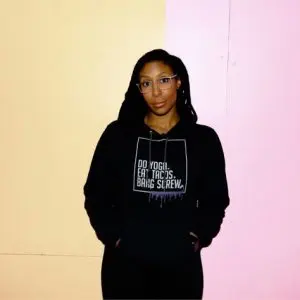
“I be like ‘Hey, just step into the pose, this shit’s gonna hurt, it’s going to suck for a second, but breathe through it and it’s gonna stop fucking sucking,'” says Tillman of her direct teaching style. She finds such dialogue more relatable than what she usually hears at yoga studios: a calm voice describing chakras while “dying whale music” plays overhead.
Her physique and fashion also puts the audience at ease. Students admit they thought yoga was only for a “skinny white girl in a Lululemon crop top.” With her, they see something familiar: “I got big thighs, an ass, big hair, and I’m walking around in a Wu Tang Clan shirt,” she says, adding , “Oh, and we’re listening to Yo Gotti.” (Ironically, she was fired from former employer Lululemon for failing to “build a community” at their yoga studio.)
Britteny Floyd-Mayo, also known as Trap Yoga Bae, introduces newcomers to yoga by similarly transforming it into a party atmosphere. Based in San Francisco, the events draw crowds in the hundreds.
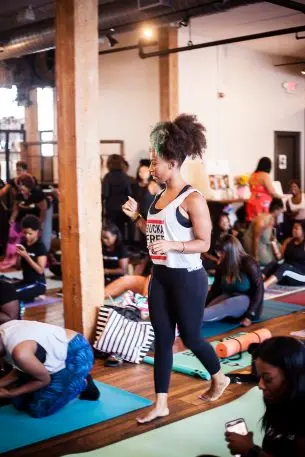
Although it’s more than just curating a class to a community’s tastes. These instructors must also overcome perceptions of yoga and meditation, and educate populations about its origins and purpose. In South L.A. for example, where a large percentage is Christian, organizers struggle to explain that even though there’s talk of the “divine,” yoga is more mindful than it is religious.
“It can be just a little Other,” says Green Tree Yoga instructor Rebecca Anne Watson, who says people are generally receptive, but “there’s still a little bit of hesitancy.”
Reshaping The Future
Despite a large Hispanic population, barely any Spanish-led yoga classes were available in Miami two years ago. Author and bilingual yoga teacher Rina Jakubowicz recalls Hispanic women telling her, “‘It’s for white people, it’s not for us.'” But she sensed interest.
The gap in the market inspired Jakubowicz to establish a bilingual yoga teacher training course, which has since been accredited by Yoga Alliance. Her first students included a cleaning and cooking crew that worked at her yoga studio employer.
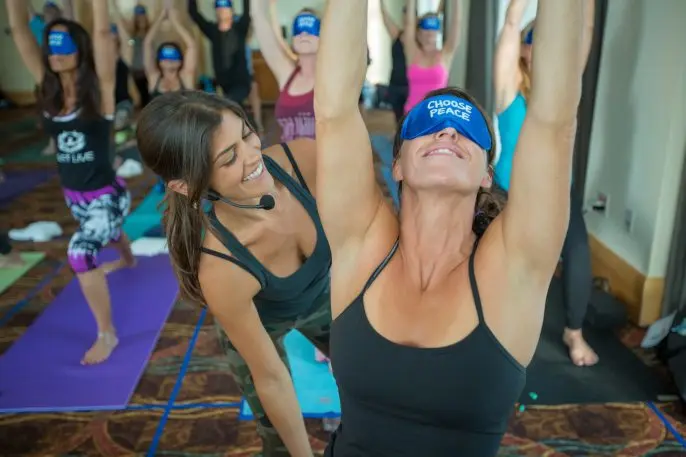
Others use alternative routes to spread the practice: Britteny Floyd-Mayo, i.e., Trap Yoga Bae, is producing a DVD and app in order to spread her namaste gospel. She’s also going on a nationwide road trip to teach instructors how to serve their communities by being authentic and, more importantly, “not appropriate your own culture.”
The landscape significantly shifted in the last year. The Black Yoga Teachers Alliance, Inc., a nonprofit and professional membership organization, doubled its membership to 250 teachers, and its Facebook group swelled to 2,000. Then there are social media stars like self-described “fat femme” yoga instructor Jessamyn Stanley, who is defying body stereotypes and starring in campaigns for REI, FabFitFun, and Kotex.
But leaders believe there is still a way to go in terms of representation. Jakubowicz, for one, still awaits the day when she’ll see more diversity in nationwide advertising, be it for athleisurewear brands or Coca Cola. As Stacy Johnson explains, “When you’re not represented in a certain space, you don’t even know that the practice exists.”
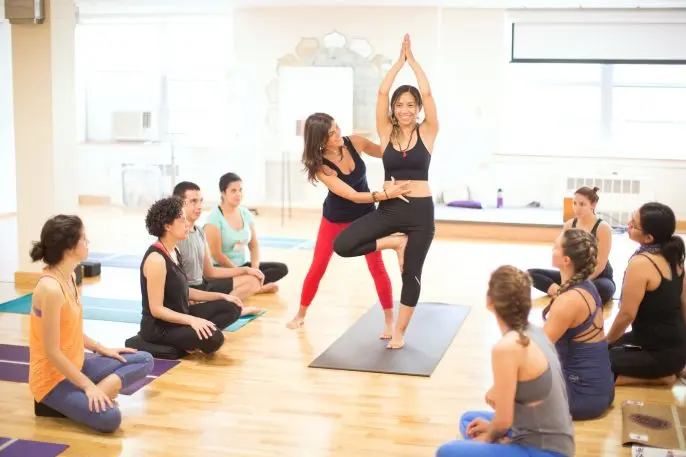
These communities are responding. Every founder in this piece attests to rapid growth and expansion plans either in terms of content, class size, or modes of media. Expect more podcasts, apps, and large-scale events popping up in cities nationwide.
“We’ve only been able to be here because of the community support,” says Green Tree Yoga’s Jennifer Alvarez. “If people weren’t utilizing us, we wouldn’t be open.”
Recognize your brand’s excellence by applying to this year’s Brands That Matter Awards before the early-rate deadline, May 3.
